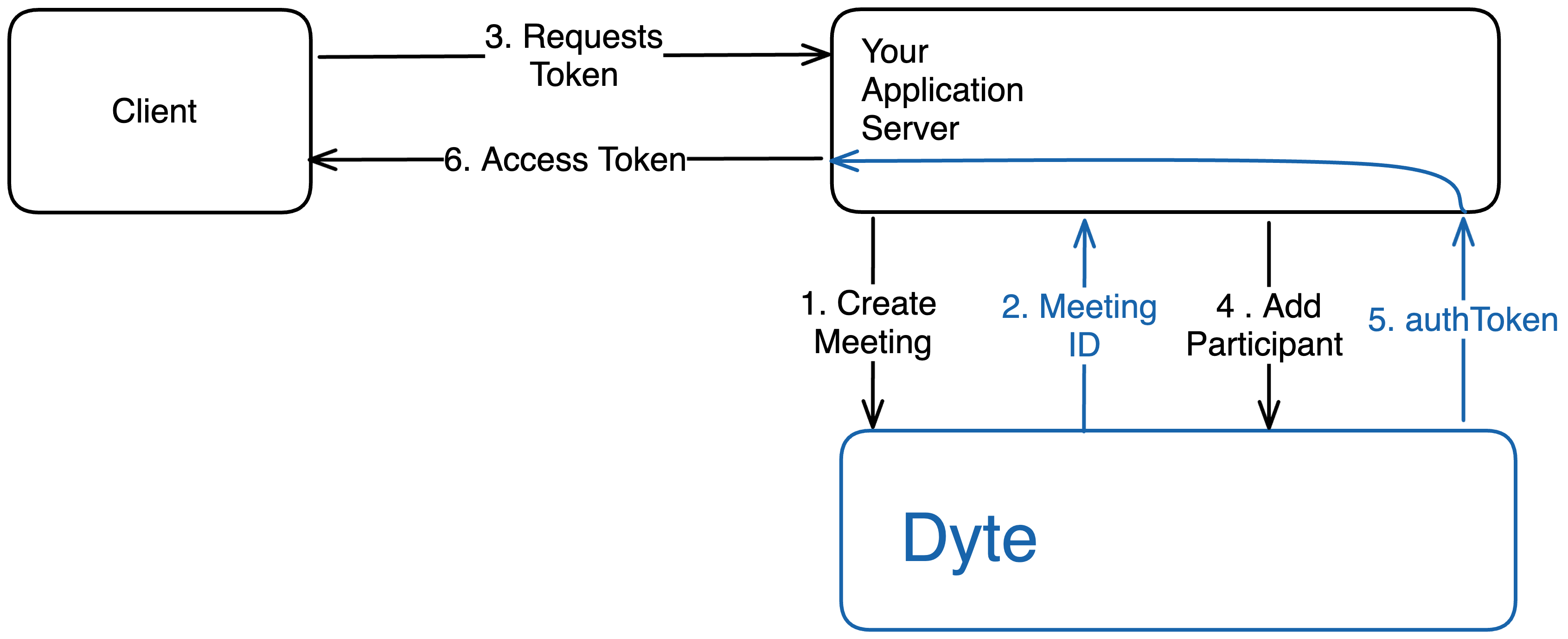Concepts: Basics
This topic guides you through the standard practices utilized in OpenTok Video API and illustrates how they correspond with Dyte's API. The main purpose of this tutorial is to support you in migrating an existing application from OpenTok to Dyte's video and audio APIs.
Overview
Here's a brief overview of the architecture used by OpenTok and Dyte.
- OpenTok Basic Flow
- Dyte Basic Flow


For more information on how to get started with Dyte, see Integrate Dyte.
Credentials
To access OpenTok's API, you need an session ID and auth Token. You generate a token for each user connecting to an OpenTok session. For more information, Token Creation Overview.
Dyte uses Organization ID and API Key that you can get from the Developer Portal.
| OpenTok | Dyte |
|---|---|
| Session ID | Organization ID |
| Auth token | API Key |
Session / Meeting
OpenTok utilizes Sessions to establish connections between participants, whereas Dyte uses Meetings for the same purpose.
| OpenTok | Dyte |
|---|---|
| Session | Meeting |
| Session ID | Meeting ID |
Participant Authentication
In OpenTok, hashing function and secret are used to generate a participant access token. Foe example, for Java:
import com.opentok.OpenTok;
import com.opentok.exception.OpenTokException;
class Test {
public static void main(String argv[]) throws OpenTokException {
// Set the following constants to your OpenTok API key and API secret.
// See https://tokbox.com/account/.
OpenTok opentok = new OpenTok(API_KEY, API_SECRET);
//Generate a basic session. Or you could use an existing session ID.
String sessionId = opentok.createSession().getSessionId();
String token = opentok.generateToken(sessionId);
System.out.println(token);
}
}
In Dyte, you make a REST API call to Add Participant API which returns authToken.
| OpenTok | Dyte |
|---|---|
| Access Token | Authtoken |